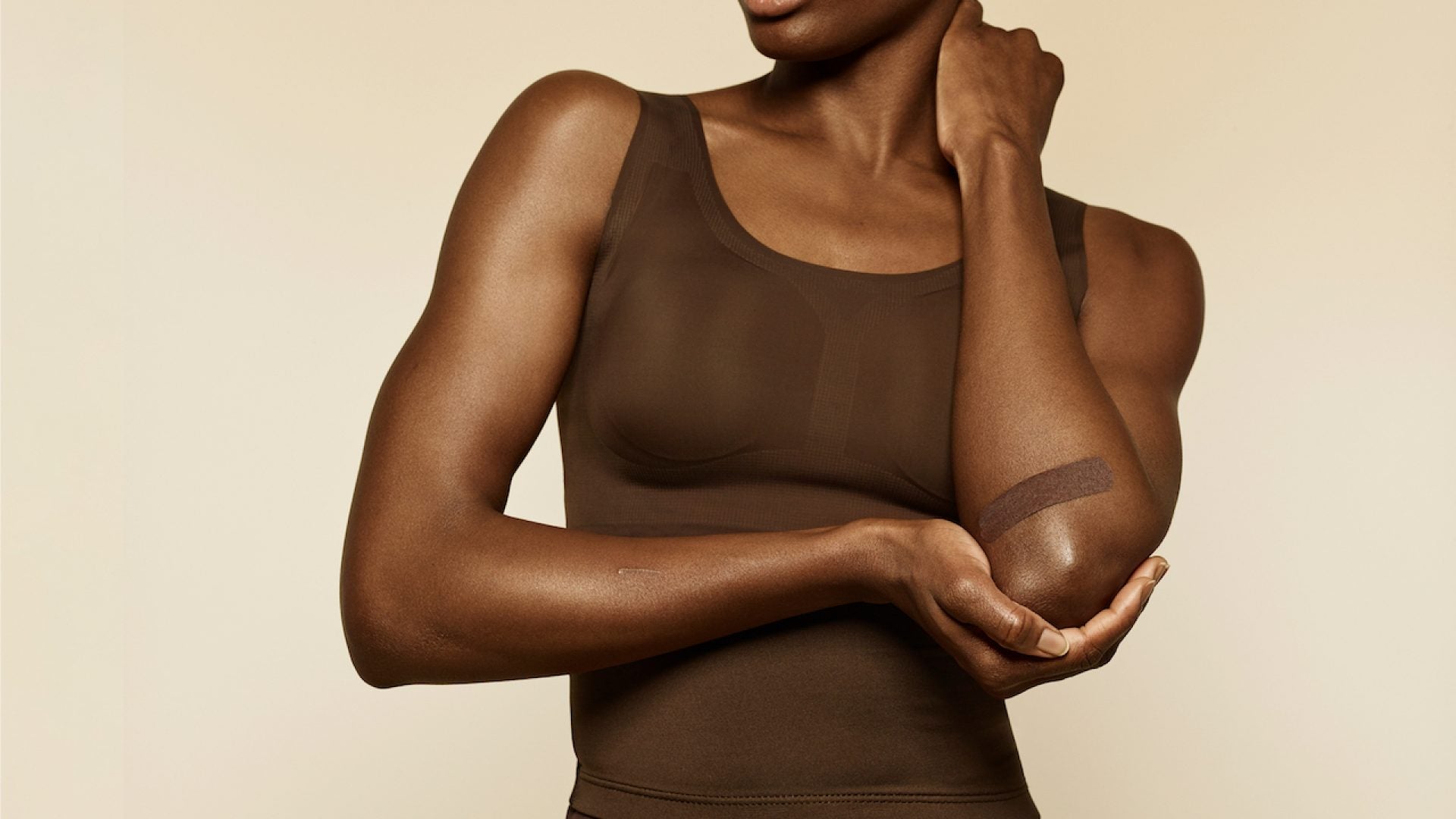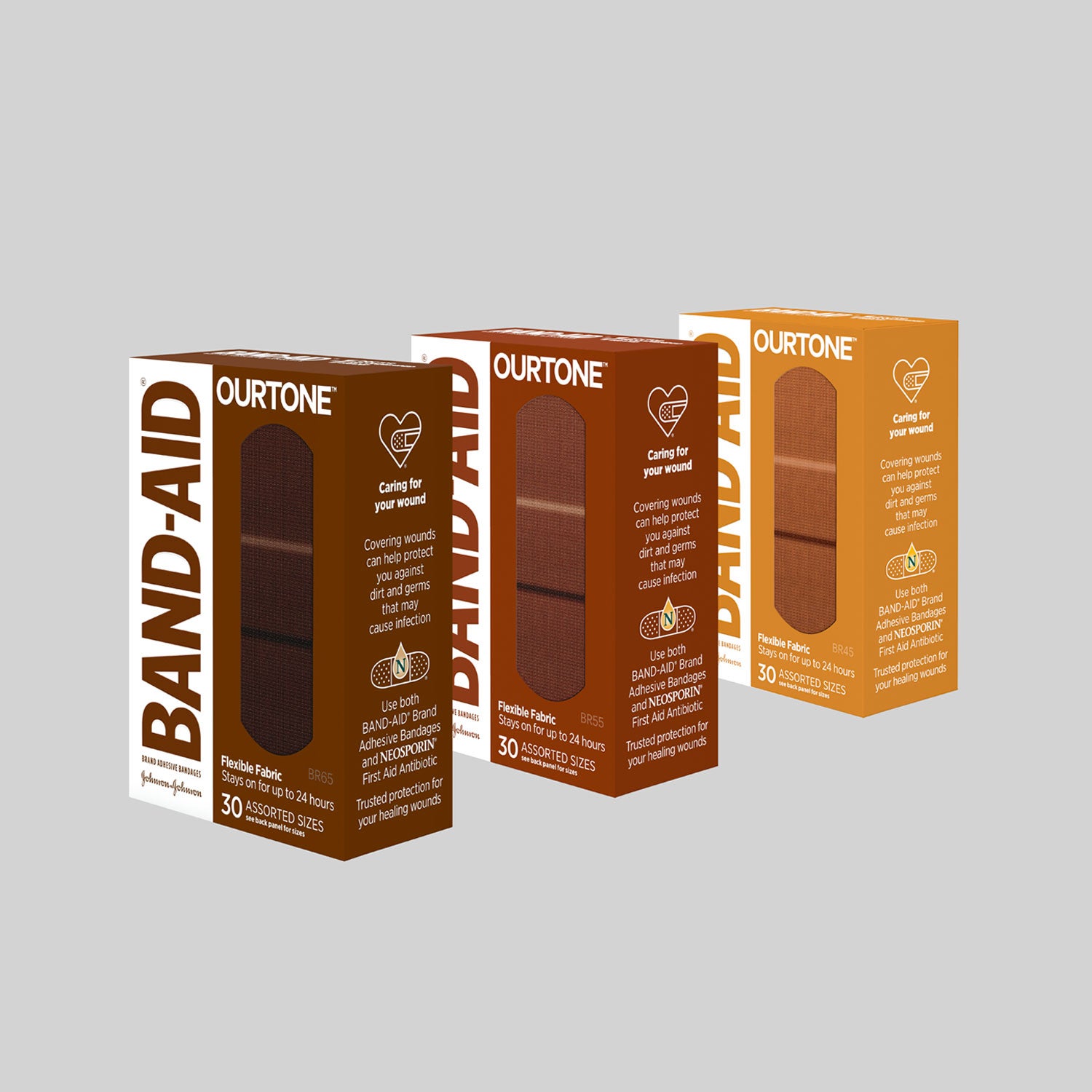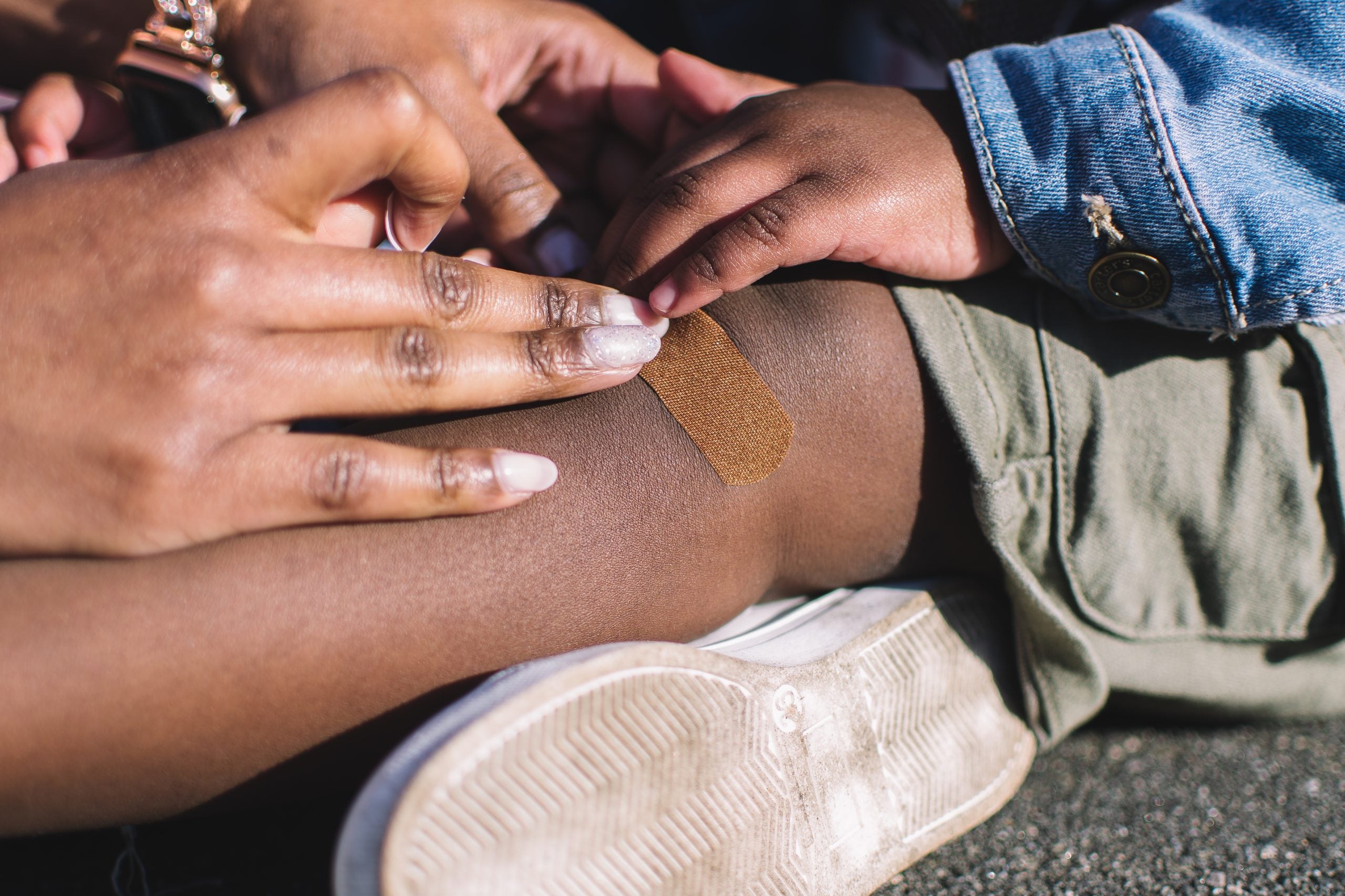
BAND-AID® is making good on its promise to the Black community.
Nearly a year after the brand revealed on Instagram that it was coming out with a line of black and brown bandages, they’ve finally revealed their OURTONE™ line, which comes in shades of brown that embrace the beauty of diverse skin tones.
The news initially came in the wake of protests following the death of George Floyd, though the initiative had been years in the making. “We hear you. We see you. We’re listening to you,” the post said last June. “We stand in solidarity with our Black colleagues, collaborators and community in the fight against racism, violence and injustice. We are committed to taking actions to create tangible change for the Black community.”
“When we first talked about it nine months ago, it was in response to [the fact] that we didn’t feel that we were moving fast enough,” says Dawn Hampton, Vice President of Marketing, Consumer Experience Organization.
BAND-AID first created bandages in a variety of skin tones back in 2005, but said it discontinued the line due to lack of interest. “This collection at its core is so important to us because we really always have been anchored in care and we strive to be inclusive,” says Hampton. “So as leaders in this category and in this space we wanted a product line that reflects a wider range of colors.”

She continued, “consumers really wanted a product that they see themselves in. So there was an opportunity to better-reflect, you know, a wider range of the skin tones that were in the marketplace, and we heard them loud and clear.
For the launch, BAND-AID partnered with Hero Collective ̶, a Black-owned culture-driven, creative, and digital agency ̶ to help deliver a product that makes more people feel seen, represented and valued.
“When you think about big, huge companies like J&J, you may think about companies that are riddled in like bureaucracy or politics,” says Joe Anthony, Founder of Hero Collective. “They were extremely collaborative, open, and excited about working with us in developing a very culture-forward brand from the ground up to truly represent the needs of this community.”
Of course, the announcement was not met with criticism. Some consumers questioned why it took the legacy brand 100 years after the adhesive bandages were invented to include a line of inclusive bandages, or why they hadn’t supported existing Black owned brands such as Tru-Colour Bandages, who had already brought these bandages to life for years.
“We believe that some of the smaller companies all had great products,” says Hampton. But when you think about who BAND-AID is, we’re a leader in this category and our consumers asked us specifically for this product. And so as a brand that is widely available, we needed to make sure that we reflected a product that was inclusive for everyone.”

In addition to the new line of bandages, BAND-AID recently established the BAND-AID® BRAND Black Healthcare Heroes in Nursing Scholarship with the National Black Nurses Association and the BAND-AID Brand Champions for Health Equity Scholarship with the National Student Nurse Association, a multi-year commitment to financially support Black nursing students pursuing careers in the medical field. Through this partnership, they will also provide scholarships and membership support to increase representation and contribute to more equity in the nursing profession.
“When we started working with them, it was clear and it was obvious that they wanted to do this thing the correct way,” says Anthony.
“So that meant not just working in a vacuum, but listening and engaging the consumer base — our audience — in a variety of focus groups. Also through listening sessions, looking at the competitive landscape, looking at the total care market, looking at adjacent industries to try and get as much inspiration to ensure that we were developing a product that was not just profound and true to everything that J&J represented, but was truly indicative of what this community, was looking for, and to be quite honest, what they deserved.”
